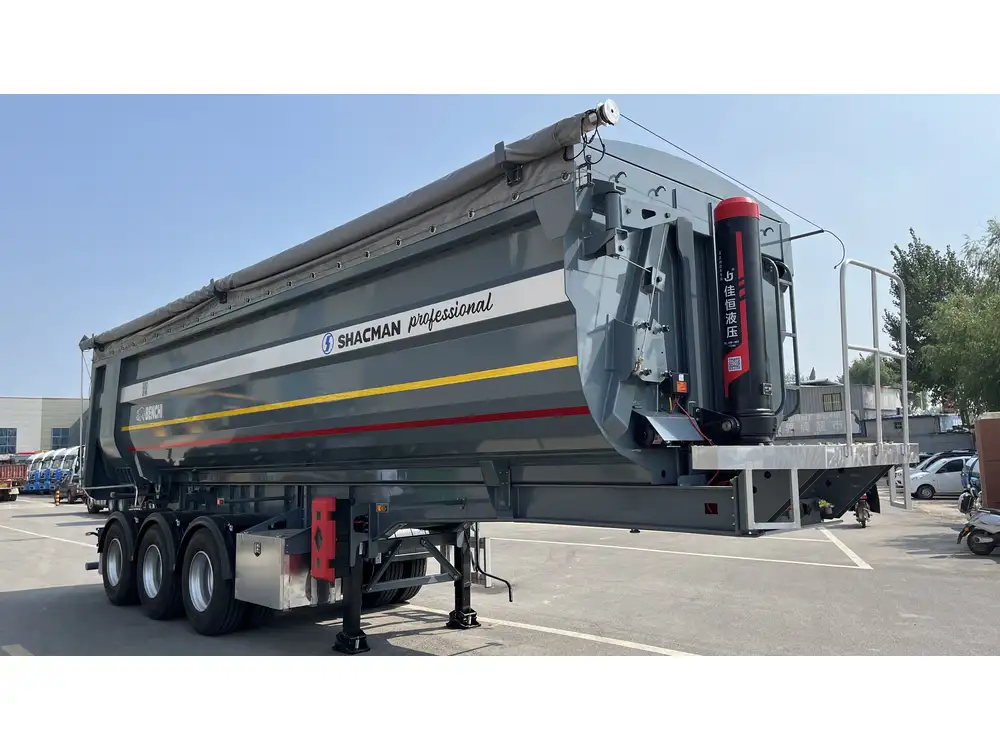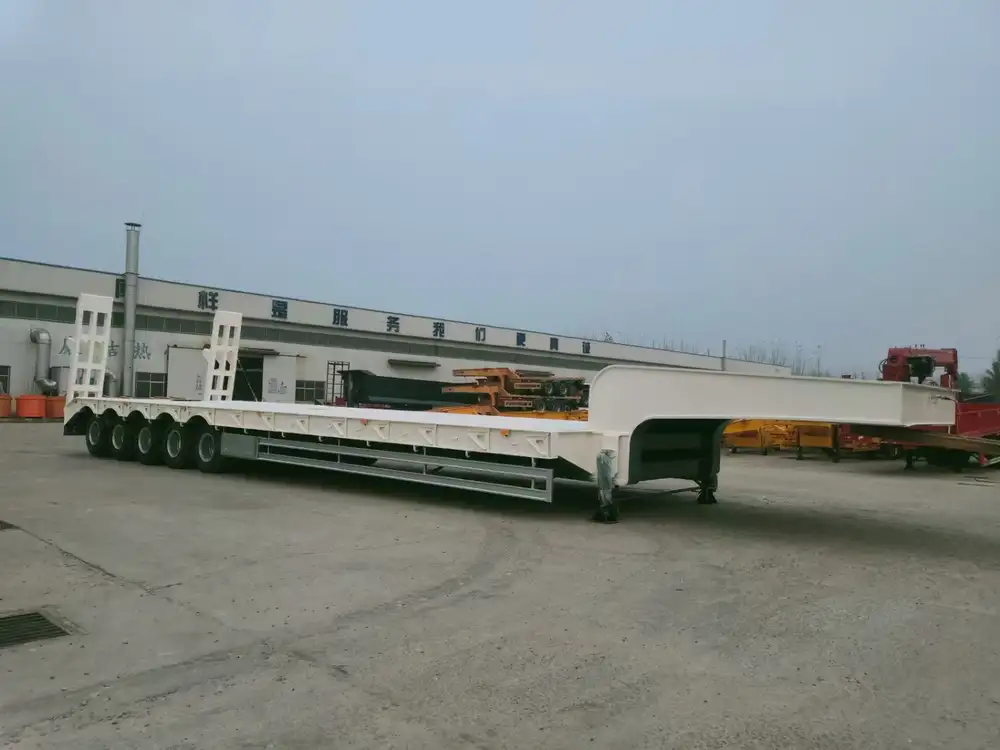In the realm of logistics and transportation, understanding the dimensions of various types of trailers is essential for both operational efficiency and regulatory compliance. Among these types, the semi-trailer with a length of 53 feet holds a prominent position. This lengthy trailer is commonly utilized in the freight industry, and knowing its dimensions is crucial for both drivers and fleet operators alike. In this article, we will delve into the specifics of semi-trailer dimensions and explore their implications for transportation and logistics.
The Basics of Semi-Trailer Dimensions
What is a Semi-Trailer?
A semi-trailer is a type of trailer that does not have a front wheel, meant to be towed by a tractor unit. The unique design allows for a greater load capacity, making it the backbone of freight transportation in many sectors. The length of the trailer can significantly affect everything from load capacity to maneuverability, making it an important consideration for logistics professionals.

Standard Lengths and Regulations
The Federal Motor Carrier Safety Administration (FMCSA) has set regulations governing the lengths of trailers for safety reasons. Typically, the maximum allowable length for a semi-trailer in the United States is 53 feet. However, these regulations can vary by state. In certain states, combinations of trucks and trailers can exceed this limit.
| Trailer Type | Maximum Length |
|---|---|
| Standard Semi-Truck | 80 feet (overall) |
| 53’ Semi-Trailer | 48 – 53 feet |
| Double Trailers | 28 feet per trailer |
| Longer Combination Vehicle | Various |
Why is Length Important for Semi-Trailers?
Impact on Load Capacity
A 53-foot trailer can typically carry a maximum of around 26,000 to 30,000 pounds, depending on the type of cargo and the regulations in the state where it operates. The additional length allows for more cargo space but can also increase the weight for drivers. Operators must balance the load capacity with safety regulations, such as axle weight limits.

Improvement of Maneuverability
While a longer trailer provides a greater volume for cargo, it also affects maneuverability. A 53-foot trailer is less nimble than shorter options, making it more challenging to navigate urban environments or tight loading docks. Therefore, operators must account for the extended turning radius when planning their routes.
Detailed Measurements of a 53′ Semi-Trailer
Overall Dimensions
A 53-foot semi-trailer has standard dimensions that can slightly vary based on construction and design. The typical dimensions include:
- Length: 53 feet (636 inches)
- Width: 8.5 feet (102 inches)
- Height: 13.5 feet (162 inches)

Inside Dimensions
The internal dimensions also play a pivotal role in determining what cargo can be safely transported. The cargo space offers the following dimensions:
| Internal Dimension | Measurement |
|---|---|
| Length | Approximately 52.5 feet |
| Width | Approximately 7.7 feet |
| Height | Approximately 13.6 feet |
The usable space within a 53-foot trailer is crucial for various industries that rely on specific cargo dimensions.
Weight Distribution Guidelines
Proper weight distribution is essential for safe transport. Exceeding the weight limits on any axle can lead to fines, unsafe driving conditions, and increased wear and tear on the vehicle. The distribution must conform to these guidelines:
- Single Axle: Maximum of 20,000 pounds
- Tandem Axle: Maximum of 34,000 pounds
- Gross Vehicle Weight Rating (GVWR): Normally up to 80,000 pounds for the entire vehicle combination.
Regulations Impacting the Use of 53′ Trailers

State-Specific Variations
Although the federal guidelines provide a framework, individual states may impose stricter limitations, necessitating compliance with both federal and state regulations. For instance, California has specific requirements for axle spacing and trailer configurations, which may impact how semi-trailer units are utilized in that region.
International Considerations
For logistics that cross international borders, understanding the metric translations of trailer dimensions becomes crucial. A 53-foot trailer translates to approximately 16.15 meters, which can bring about different regulations in countries using the metric system. It’s essential for international operations to remain informed about both metric weight limits and dimensions.
Applications of 53′ Semi-Trailers

Common Uses for 53′ Trailers
Due to their capacity, 53-foot trailers find utility in various industries, including:
- Retail Distribution: Ideal for transporting bulk goods from manufacturers to warehouses.
- Automotive Industry: Used for transporting vehicle parts and finished automobiles.
- Food and Beverage: Perfect for moving large quantities of perishable goods due to their size and temperature-controlled options.
Specialized Configurations
53-foot trailers can also be customized for specialized needs:
- Reefers: Refrigerated trailers for temperature-sensitive cargo.
- Flatbeds: For hauling oversized or heavy loads that require easy loading and unloading.
- Tankers: Used for liquid transport, such as petroleum or chemicals.
Key Considerations for Fleet Operators

Selection Criteria for Trailers
When selecting a 53-foot semi-trailer, fleet operators should take several key factors into account:
- Type of cargo: Different types of trailers may be needed based on the specific goods being transported.
- Route and terrain: Operators must consider the characteristics of the roads and any potential obstacles they may face.
- Regulatory compliance: Ensure that all trailers meet local, state, and federal regulations.
Maintenance and Safety Checks
The mechanics of a 53-foot semi-trailer require regular maintenance checks to ensure roadworthiness. Operators should adhere to the following monitoring protocols:
- Brake inspection: Regularly check brake pads, rotors, and air systems for optimal performance.
- Tire maintenance: Ensure tires are adequately inflated, tread is sufficient, and there are no signs of wear.
- Lighting and signaling: Confirm all lights and signals are functional before every trip.
Conclusion
In the world of freight transportation, the 53-foot semi-trailer stands out as a highly versatile and widely used tool in the logistics arsenal. Its dimensions, capacity, and potential applications cater to the demands of varied industries, while regulatory guidelines ensure safe and effective use. Understanding the intricacies of these trailers—not just their length but their internal and external dimensions along with compliance regulations—can make the difference between successful logistics management and costly mishaps.
Fleet operators must navigate the challenges of size, weight distribution, and state-specific regulations with precision, and through this understanding, seamless transport can be achieved. An informed approach, including efficient routing and maintenance interventions, will ultimately enhance operational efficiency and sustain the flow of goods across the economy. As technology continues to evolve within the industry, staying abreast of best practices and regulations related to semi-trailers will empower businesses to thrive in this dynamic landscape.



